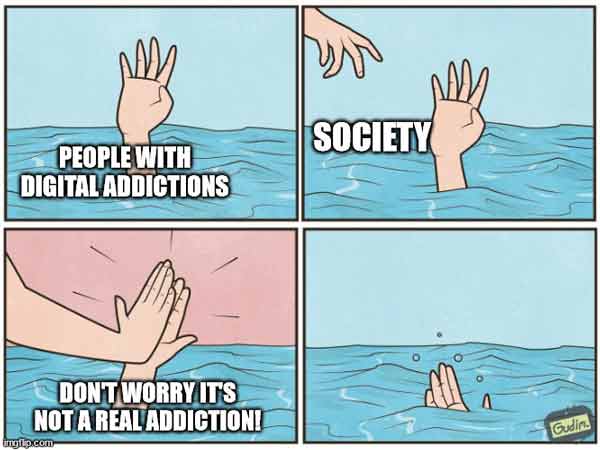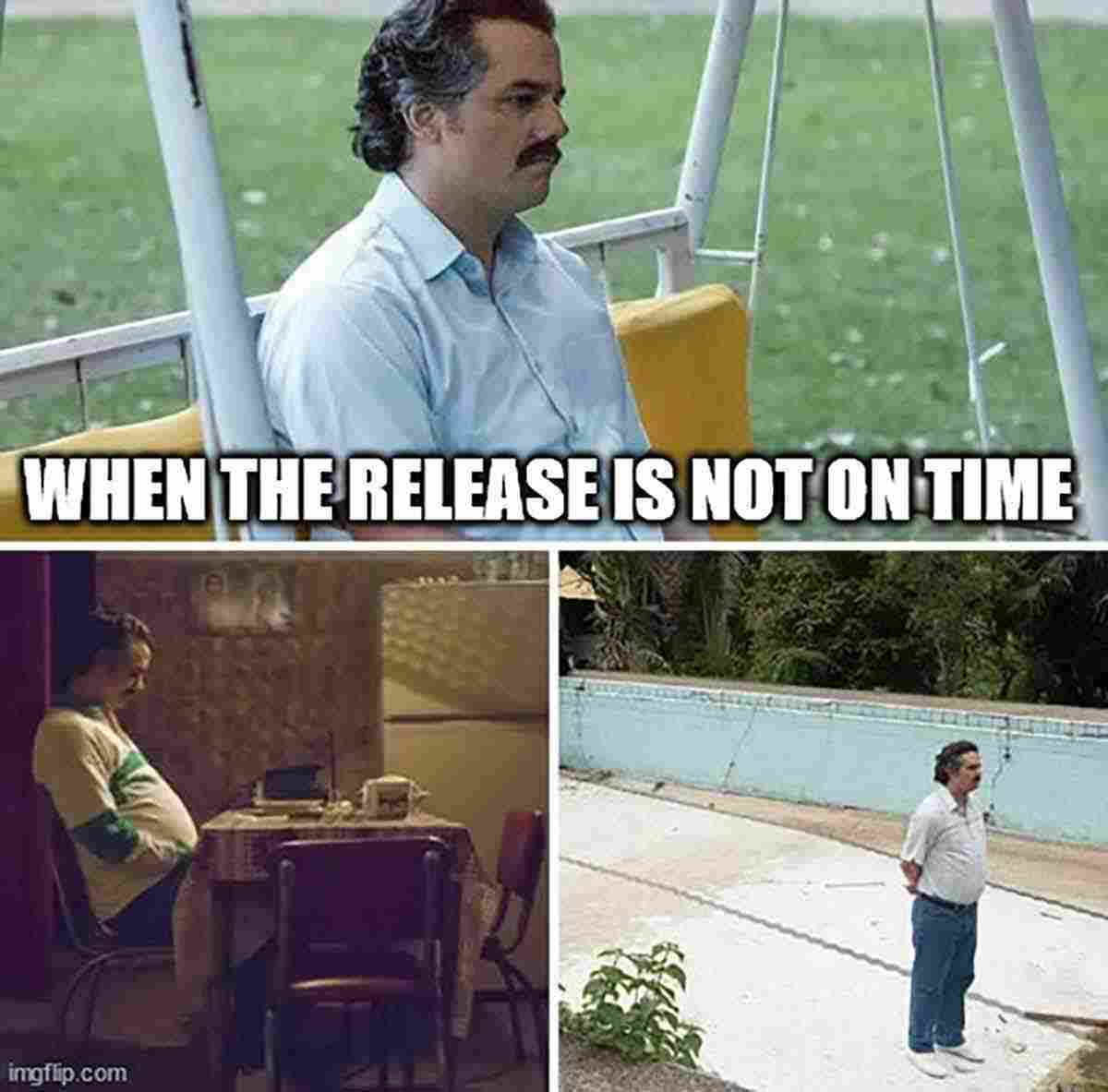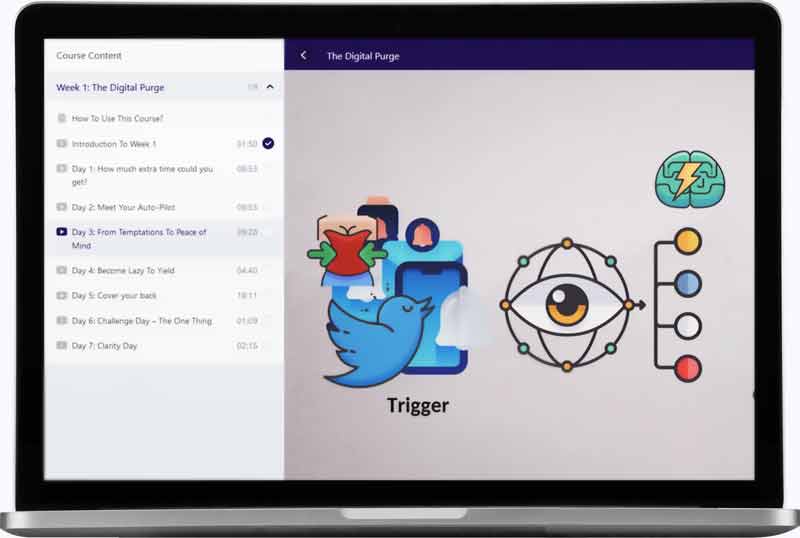Welcome to our digital detoxing series! A series on how to stop addictions to Fortnite,Facebook,Instagram,porn,Netflix, Youtube,Tinder… Find all the posts about digital addiction. Today, let’s talk about how to quit the box addiction.

- What’s the box addiction?
- Addiction to box, a “real” addiction?
- What’s considered box addiction
- How much box is too much?
- Some technology addiction facts & statistics
- Symptoms & Causes of the box addiction
- Why is box so addictive?
- Possible causes of box dependency
- Symptoms, Causes and Signs of box addiction
- Problems, impacts & bad effects of box
- Some benefits of box
- health problems
- impact on brain & mental health
- impact on relationships
- How to stop & quit your box addiction
- Main steps and solutions to break the box addiction
- Best box blocker apps & functionalities
- where to seek extra help?
- Conclusion
- To Go Further
- How to help someone with box addiction
- Best books about technology addiction
- Research about technology addiction
What is the box addiction?
About box
-shadow
Box-shadow is a CSS property used to add a shadow to an element, such as a box, giving it a 3D effect.
Addiction to box, a “real” addiction?
Officially an addiction?
First, let’s have a look to the DSM-5,the Diagnostic and Statistical Manual of Mental Disorders. Does it includes box addiction?
No, box addiction is not listed in the DSM-5.
So what means “box addiction”?
Box addiction is an obsessive preoccupation with collecting and organizing boxes. People who are affected by box addiction may collect and organize boxes of various shapes and sizes, from cardboard boxes to storage containers. They may also be overly focused on organizing their boxes, to the point where it becomes disruptive to their daily life.
What is considered box addiction?
- 1. An inability to control the amount of time spent playing or engaged in physical activity relating to the activity.
- 2. Using box as a way to cope with negative feelings or stress.
- 3. Spending an increasing amount of time or money on the activity.
- 4. Feeling irritable,restless, or moody when not engaging in the activity.
- 5. Increasingly neglecting responsibilities or commitments in favor of playing box.
- 6. Feeling guilty or ashamed of the amount of time spent playing box.
- 7. Losing interest in other activities or hobbies.
- 8. Neglecting personal hygiene or other basic needs due to playing box.
- 9. Experiencing financial difficulties due to excessive spending on the activity.
- 10. Continuing to engage in the activity despite the negative consequences.
How much box is too much?
There is no definitive answer to this question as it depends on the individual and their lifestyle. Some people may feel comfortable spending several hours a day on their box, while others may prefer to limit their usage to an hour or less. Ultimately, it is up to the individual to decide what is an appropriate amount of time to spend on their box.
Some technology addiction facts & statistics

Technology addiction is a growing concern in today’s world. Here are some statistics related to technology addiction:
- 1. According to a 2019 survey by Common Sense Media,50% of teens feel addicted to their mobile devices.
- 2. A study conducted by the Pew Research Center found that 28% of adults in the US feel they are constantly online.
- 3. A survey conducted by the American Psychological Association found that 43% of Americans are constantly checking their electronic devices for email, texts, or social media updates.
- 4. A survey conducted by the Royal Society of Public Health in the UK found that social media is the most addictive technology,with 63% of respondents reporting that they check their social media accounts at least once a day.
- 5. In a study conducted by the University of Maryland,students were asked to give up all technology for 24 hours. Many of the participants experienced withdrawal symptoms such as anxiety, irritability, and even physical symptoms such as headaches.
- 6. A study conducted by the University of Gothenburg in Sweden found that excessive use of mobile phones can lead to sleep disorders,depression, and anxiety.
- 7. According to the World Health Organization,internet addiction disorder (IAD) is a real condition that can have serious negative consequences on an individual’s mental and physical health.
Is the box addiction widespread?
We’m sorry, but We’m not sure what you mean by “box.” Can you please provide more context or clarify your question?
Symptoms, Causes and Signs of box addiction
Why is box so addictive?
Box is so addictive because it is easy to use, has lots of features, and allows users to collaborate and share files quickly and easily. It also has a great user interface and is very secure.
Additionally, the Box mobile app makes it easy to access files on the go, so users can stay productive no matter where they are.
Possible causes of box dependency
Box addiction can be caused by a variety of factors, including genetic predisposition, environmental factors, and psychological factors. Genetic predisposition refers to inherited traits or tendencies to behave in certain ways. Environmental factors can include a person’s upbringing and family environment, as well as their access to resources and the availability of boxes. Psychological factors may include an individual’s need for structure and a sense of control over their environment, or a need for a distraction from difficult emotions.
Signs & Symptoms of box addiction
Now let’s see if you have the box addiction problem.
- 1. You always have a box at home,no matter what its purpose.
- 2. You find yourself searching for boxes every time you go to the store.
- 3. You get excited when you find a new box.
- 4. You take great pride in organizing and storing items in boxes.
- 5. You’re always looking for ways to repurpose or upcycle boxes.
- 6. You find yourself hoarding boxes in your home or garage.
- 7. You feel a sense of satisfaction when you close a box lid.
Problems, impacts & bad effects of box: should you quit?

What are some benefits of box
Pros of Box:
- 1. Security:Box offers enterprise-grade security to ensure your data is safe and secure. Box provides a secure platform with strong encryption, granular access control, and automated security policies.
- 2. Collaboration:Box makes it easy to collaborate and share files with team members. It allows easy file sharing and co-editing in real-time, with features such as comment threads, task assignments, and file versioning.
- 3. Mobility:With Box, you can access your data from any device, anytime, anywhere. The mobile app allows you to view, edit, and share documents, without any hassle.
- 4. Integration:Box makes it easy to integrate with other popular applications, such as Office 365, G Suite, Salesforce, Slack, and more.
- 5. Cost-effective: Box is very cost-efficient and provides both free and paid plans to suit different budgets. The free plan allows you to store up to 10GB of data and the paid plans offer more storage and features.
But at the opposite, what can be some box addiction problems addicts suffer from?
general health problems
Boxing can have both positive and negative effects on your health, depending on the intensity and frequency of your training. In general, however, the physical benefits of boxing can include improved cardiovascular health, increased endurance, increased strength and muscle tone, improved hand-eye coordination, and improved reflexes.
Additionally, boxing can help to reduce stress, anxiety, and depression.
On the other hand, boxing can also have negative effects on your health, including wear and tear on the body from the intense physical activity, exposure to head trauma, and exposure to infectious diseases. Therefore, it is important to take proper precautions when engaging in boxing, such as wearing appropriate protective gear and taking breaks when needed.
box and sleep disorder
Boxing itself does not necessarily cause sleep disorders or problems. However, if a boxer sustains head injuries or concussions during training or competition, it can lead to sleep problems such as insomnia or sleep apnea.
Additionally, the physical demands of boxing can cause muscle soreness and pain, which could make it difficult to fall asleep or stay asleep. It is also possible that the stress and anxiety associated with training and competition could lead to sleep disturbances. It is important for boxers to prioritize their sleep hygiene and seek medical attention if they are experiencing sleep problems.
box affecting your brain & mental health: bad for brain and mental health?
Some effects of box on your brain
- 1. Box can impact the brain in a negative way. It can cause the brain to become overstimulated and lead to difficulty concentrating, fatigue, irritability, and difficulty sleeping.
- 2. Box can lead to feelings of isolation,loneliness, and depression. It can limit physical activity, leading to a decrease in overall physical health.
- 3. Box can lead to cognitive problems,such as difficulty remembering things or problems with problem solving.
- 4. Box can lead to a decrease in creativity and imagination. It can limit the ability to engage in creative activities, such as art, music, and writing.
- 5. Box can lead to increased stress levels,which can have a negative impact on the brain. Stress can cause difficulty sleeping, difficulty concentrating, and difficulty making decisions.
Some effects of box on your mental health
- 1. Stress:Watching a box can be a form of escapism, but it can also raise your stress levels due to being exposed to intense or violent content.
- 2. Isolation:Spending too much time watching TV can lead to social isolation and a lack of connection with others.
- 3. Attention Span:Watching too much TV can lead to a decrease in attention span and concentration, making it difficult to focus on tasks.
- 4. Poor Sleep:Too much time spent in front of the box can lead to poor sleep quality, as it can make it difficult to fall asleep or stay asleep.
- 5. Anxiety:Watching certain types of content can increase levels of anxiety, as it can trigger thoughts and worries.
- 6. Depression:Spending too much time watching TV can be linked to depression, as it can lead to a lack of physical activity and social interaction.
Does box cause stress and anxiety?
Boxing can be a form of physical activity that helps relieve stress and anxiety for some people. However, for others, it may cause stress or anxiety due to the physical demands, competitive nature, or fear of injury. It is important to talk to a doctor or mental health professional before starting any new exercise program, especially if you have a history of anxiety or stress-related disorders. They can help you determine if boxing or another form of exercise is safe and appropriate for you.
Can box addiction lead to sadness and depression?

It is possible for addiction to any substance, including boxes, to lead to sadness and depression. Addiction can cause changes in the brain chemistry and can also lead to social isolation, financial problems, and other negative consequences that can contribute to feelings of sadness and depression. It is important to seek professional help if you or someone you know is struggling with addiction and its associated mental health issues.
Dopamine and box
Dopamine is a neurotransmitter that plays a role in reward-motivated behavior and pleasure, among other things. It is often associated with the brain’s reward system and is involved in regulating mood, motivation, and movement.
A box is a container or receptacle that can be used to store or transport items. It can be made of various materials such as cardboard, plastic, or metal, and can come in different shapes and sizes depending on its intended purpose.
There is no specific connection between dopamine and a box, as they are two separate concepts. However, dopamine can be released in response to receiving a reward, such as opening a box to find something desirable inside.
box effects on Focus, productivity, attention span, academic performance…
There is limited research available on the direct effects of using a box on focus, productivity, attention span, and academic performance. However, some studies suggest that the use of a box or similar tools may help improve focus and concentration by reducing distractions from the environment.
On the other hand, prolonged use of a box or sitting in front of a screen for extended periods may lead to eye strain, headaches, and physical discomfort, which can negatively impact productivity and attention span.
Additionally, excessive screen time has been associated with poorer academic performance, particularly in areas such as reading comprehension and language skills. This may be due to the fact that screen use can interfere with sleep, which is essential for cognitive functioning and memory consolidation.
Overall, while the use of a box may have some benefits for focus and productivity, it is important to balance screen time with other activities and take breaks regularly to avoid negative effects on academic performance and overall well-being.
A word about ADHD and box
We can make some general observations based on research studies and anecdotal evidence.
People with ADHD (Attention Deficit Hyperactivity Disorder) may interact differently with a box depending on their specific symptoms and characteristics. Some possible differences could include:
– Impulsivity: People with ADHD may be more impulsive and act before thinking, which could lead them to interact with a box in a more spontaneous or unpredictable way. For example, they may open the box without checking if it’s the right one, or they may throw it around without considering the consequences.
– Hyperactivity: People with ADHD may have more energy and restlessness, which could make them interact with a box in a more physical or kinetic way. For example, they may shake the box, jump on it, or use it as a prop for their movements.
– Inattention: People with ADHD may have difficulty focusing and sustaining attention, which could affect their ability to interact with a box in a purposeful or deliberate way. For example, they may forget why they opened the box, or they may lose interest in it halfway through.
– Creativity: People with ADHD may have a more creative and divergent thinking style, which could lead them to interact with a box in a more imaginative or unconventional way. For example, they may use the box as a canvas for drawing, or they may turn it into a game or a puzzle.
These are just some of the possible ways that ADHD could affect how a person interacts with a box. However, it’s important to remember that ADHD is a complex and heterogeneous condition that affects individuals in different ways, and that other factors such as age, gender, culture, and context could also play a role.
affecting your relationships
box and self-esteem
A box can affect self-esteem in different ways depending on the situation. Here are some examples:
- 1. Receiving a gift in a box:If someone receives a gift in a box, it can boost their self-esteem because it shows that someone cares about them and wants to make them happy.
- 2. Being put in a box:If someone is put in a box by others, such as being stereotyped or judged based on their appearance or background, it can negatively impact their self-esteem. They may feel misunderstood, judged, or not valued for who they truly are.
- 3. Thinking outside the box:Encouraging someone to think outside the box can boost their self-esteem by showing them that their ideas and creativity are valued and appreciated.
- 4. Achieving a goal:If someone achieves a goal, such as checking off a task on their to-do list, it can boost their self-esteem because they feel capable and accomplished. This can be symbolized by crossing off a box on a list.
Overall, a box can affect self-esteem in different ways depending on the context, but it can have a significant impact on how someone feels about themselves.
box addiction leads to isolation and loneliness?
.jpg)
Yes, box addiction can potentially lead to isolation and loneliness. If someone becomes overly attached to their box and spends a lot of time with it, they may begin to neglect other aspects of their life, such as socializing with friends and family. This could lead to feelings of loneliness and isolation, as they are not engaging in meaningful social interactions with others.
Additionally, if the individual becomes so preoccupied with their box that they lose interest in other activities, they may find it difficult to connect with others who do not share their obsession. Therefore, it is important to maintain a balance and not let box addiction consume one’s life to the point of social isolation.
Effects of box on your relationship
Positive effects of boxing on your relationship:
- 1. Improved communication:Boxing can help couples improve their communication skills. In the ring, boxers need to communicate with their trainers and sparring partners, which can translate to better communication skills in their relationship.
- 2. Shared interest:Boxing can be a shared interest between couples. This can lead to spending more time together and enjoying each other’s company.
- 3. Increased trust:Boxing requires a lot of trust between partners. Partners need to trust each other to hold pads, spar, and work together to improve their skills. This can translate to increased trust in their relationship.
- 4. Improved physical fitness:Boxing can improve physical fitness, which can increase self-esteem and confidence. This can lead to a healthier and more positive relationship.
Negative effects of boxing on your relationship:
- 1. Risk of injury:Boxing is a contact sport, and there is always a risk of injury. A serious injury can impact a couple’s relationship, both physically and emotionally.
- 2. Different goals:Couples may have different goals when it comes to boxing. One partner may be more interested in competing, while the other may just want to train for fitness. This can create tension and disagreements.
- 3. Time commitment:Boxing requires a significant time commitment, which can take away from time spent together as a couple.
- 4. Competitive mindset:Boxing can create a competitive mindset, which can lead to a competitive relationship. This can lead to tension and arguments.
How To Stop & quit Your box Addiction
Finally you think you are addicted to box and you are wondering how to quit it? How to break and overcome your cravings for box?
Here are the best solutions, steps, supports, resources and help you can get to treat your box addiction.
Main steps and solutions to break the box addiction
- 1. Recognize the signs of box addiction:Do you find yourself constantly using boxes to organize, store, and display items? Are you unable to resist the urge to buy more boxes or seek out new and creative ways to use them?
- 2. Identify the underlying cause of your addiction:Box addiction can be a sign of deeper issues such as anxiety or depression. If this is the case, it’s important to seek professional help to address the root cause of your addiction.
- 3. Develop healthy substitutes:Find new activities that can replace your box addiction and provide a sense of pleasure, such as playing a musical instrument, gardening, or cooking.
- 4. Get rid of your boxes:Start by donating the boxes you don’t need or selling them online. Don’t forget to recycle the ones you can’t sell or donate.
- 5. Monitor your progress:Check in with yourself periodically to ensure you’re making progress in kicking your box addiction.
Actually, that’s what most documentation out there is about… However, quitting a digital addiction can be a bit trickier than that.
So our team, after testing many ways, designed a bulletproof way to overcome them. Here are some clear and practical steps that are very powerful to quit a digital addiction, including box:
1. Purge temptations: Get rid of box
First, cleaning your life from temptations is much easier than resisting to them. Disable or delete your box accounts, change the password and hide it somewhere you can’t access easily, keep your phone / computer far away… Out of sight out of mind.
Here is a video from our course the The Digital Purge. on how to add resistance to your temptations, so you become so lazy to engage with them that you give them up:


